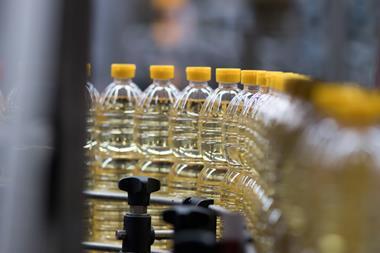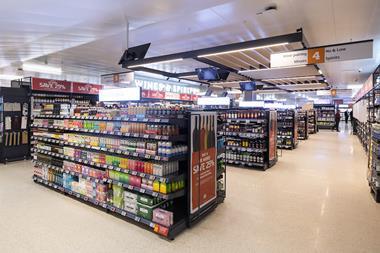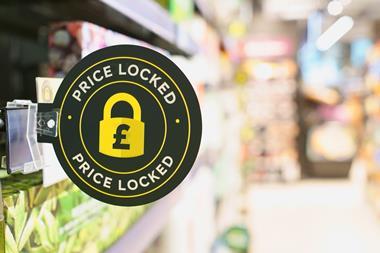A strong euro and higher welfare costs have pushed up the cost of EU chicken production – and may boost imports from outside. Mintec’s Robert Miles reports
The poultry sector was one of the big winners of the recession, with sales of chicken and eggs rising as consumers sought out affordable and versatile food. But changes are afoot in the dynamics of supply, which could lead to more poultry imported from outside Europe.
In an increasingly global market, the main drivers of poultry growth are China and Brazil, with production up 3% and 4% respectively. Both are expected to reach record levels of production in 2010.
The increase in production in Brazil is being driven by emerging markets and a recovery in exports, while in China higher living standards are stimulating domestic demand. Higher output is also expected from India, Argentina, Russia and the US.
It's a very different picture in the EU, where production is set to fall. A strong euro, higher labour costs, the increasing cost of compliance with stricter EU feed regulations and adherence to greater standards of welfare have all contributed to making EU prices far higher than those further afield. This is expected to lead to an increase in EU poultry imports.
The global broiler meat trade is forecast to grow 2% next year. Much of this is expected from Brazil, whose exports are forecast to increase by as much as 6%. The Middle East is the main buyer of Brazilian chicken, with demand expected to grow, but demand from the EU is not far behind.
Meanwhile Thailand, one of the leading chicken meat suppliers, is attempting to increase exports to the EU this year. Currently the EU imports about 40% of Thailand's chicken. There is a strict quota for Thai imports, on top of which added duty is extremely high, but a new higher quota could be established by the end of March.
The EU currently bans US poultry on the basis of the American industry's use of chlorinated water as a means of controlling potentially pathogenic micro-organisms. The US has urged the World Trade Organization to pursue action against the EU's ban on US poultry imports. If the US wins, large quantities of US imports may also be on the cards.
The output of US broilers is expected to grow by 2% next year and Russia is the largest importer of US poultry meat, but wants to produce more of its own. It also recently banned US poultry imports by imposing its own limits on allowable chlorine on imported poultry meat. As a consequence the US will be more aggressively looking for potential outlets over the coming year.
From the middle of last year, EU egg prices moved higher on the back of increasing demand and decreasing supply. The free-range sector continues to show strong growth, particularly in the UK, but while whole eggs must display their country of origin, de-shelled eggs used for processing need not. There is an expectation, therefore, that this could result in a huge boom in cheaper, less strictly controlled, imported egg products.
The poultry sector was one of the big winners of the recession, with sales of chicken and eggs rising as consumers sought out affordable and versatile food. But changes are afoot in the dynamics of supply, which could lead to more poultry imported from outside Europe.
In an increasingly global market, the main drivers of poultry growth are China and Brazil, with production up 3% and 4% respectively. Both are expected to reach record levels of production in 2010.
The increase in production in Brazil is being driven by emerging markets and a recovery in exports, while in China higher living standards are stimulating domestic demand. Higher output is also expected from India, Argentina, Russia and the US.
It's a very different picture in the EU, where production is set to fall. A strong euro, higher labour costs, the increasing cost of compliance with stricter EU feed regulations and adherence to greater standards of welfare have all contributed to making EU prices far higher than those further afield. This is expected to lead to an increase in EU poultry imports.
The global broiler meat trade is forecast to grow 2% next year. Much of this is expected from Brazil, whose exports are forecast to increase by as much as 6%. The Middle East is the main buyer of Brazilian chicken, with demand expected to grow, but demand from the EU is not far behind.
Meanwhile Thailand, one of the leading chicken meat suppliers, is attempting to increase exports to the EU this year. Currently the EU imports about 40% of Thailand's chicken. There is a strict quota for Thai imports, on top of which added duty is extremely high, but a new higher quota could be established by the end of March.
The EU currently bans US poultry on the basis of the American industry's use of chlorinated water as a means of controlling potentially pathogenic micro-organisms. The US has urged the World Trade Organization to pursue action against the EU's ban on US poultry imports. If the US wins, large quantities of US imports may also be on the cards.
The output of US broilers is expected to grow by 2% next year and Russia is the largest importer of US poultry meat, but wants to produce more of its own. It also recently banned US poultry imports by imposing its own limits on allowable chlorine on imported poultry meat. As a consequence the US will be more aggressively looking for potential outlets over the coming year.
From the middle of last year, EU egg prices moved higher on the back of increasing demand and decreasing supply. The free-range sector continues to show strong growth, particularly in the UK, but while whole eggs must display their country of origin, de-shelled eggs used for processing need not. There is an expectation, therefore, that this could result in a huge boom in cheaper, less strictly controlled, imported egg products.








No comments yet